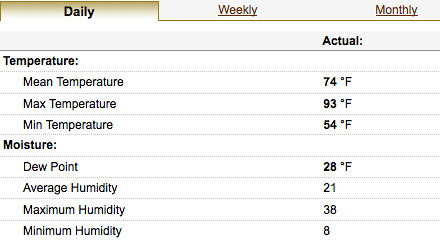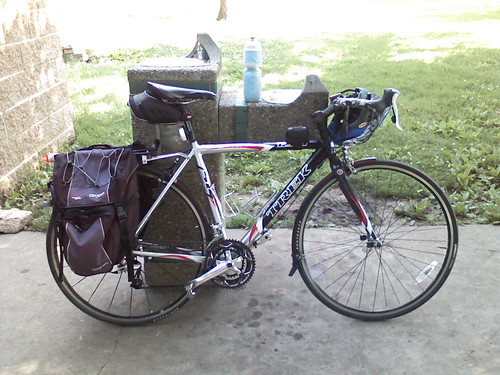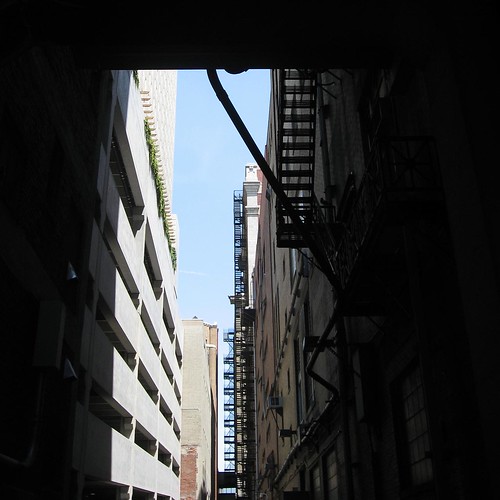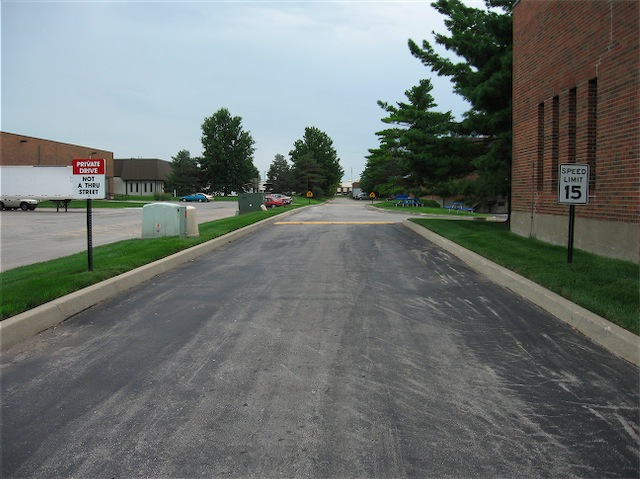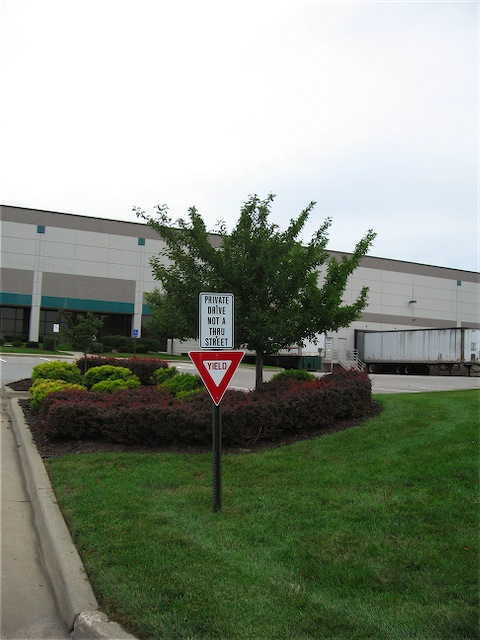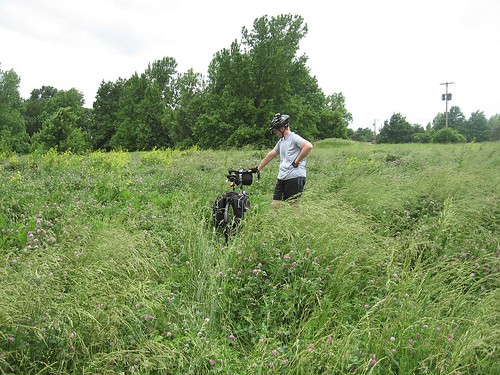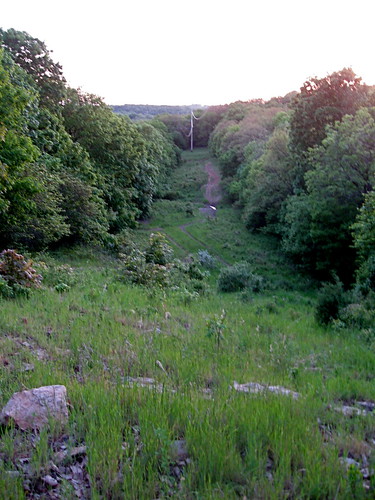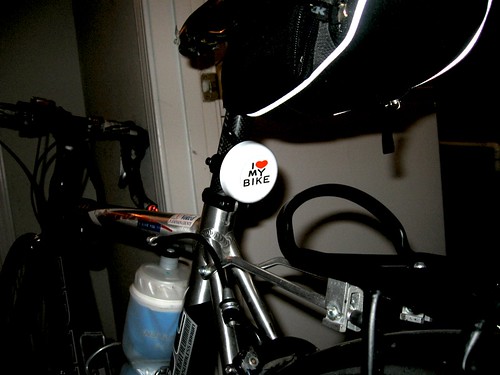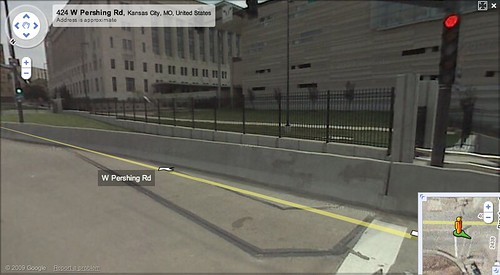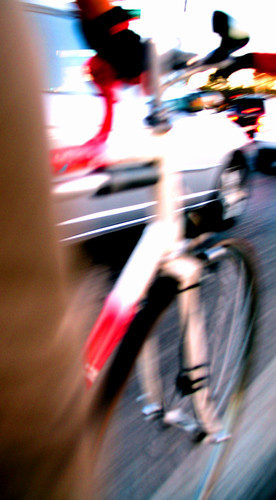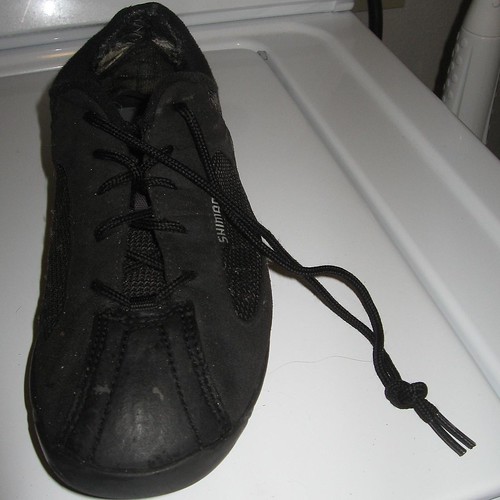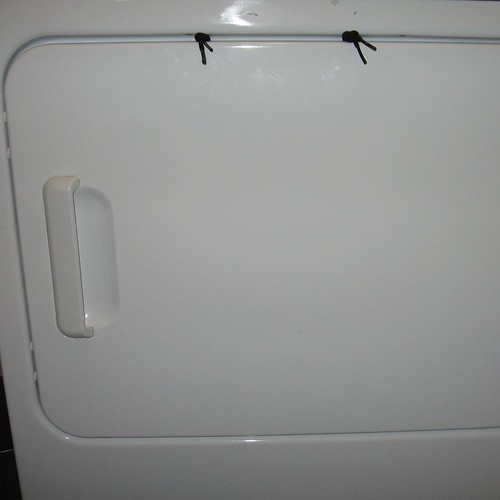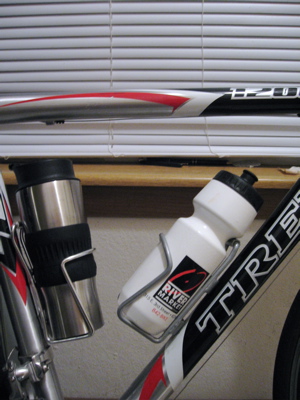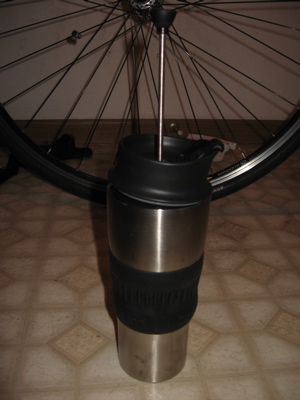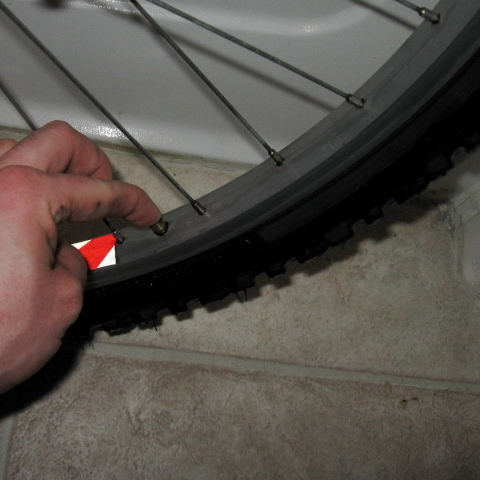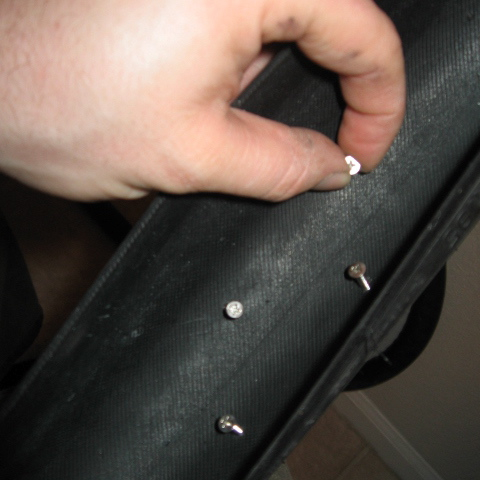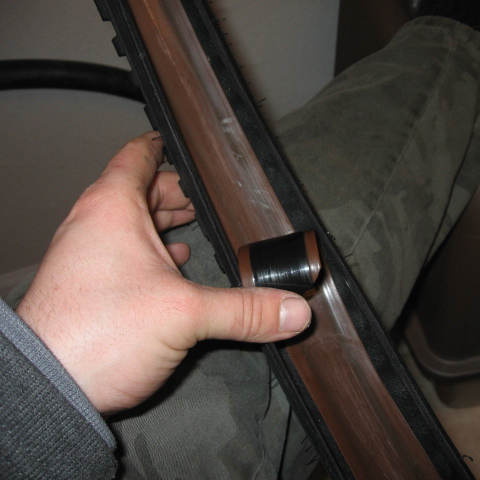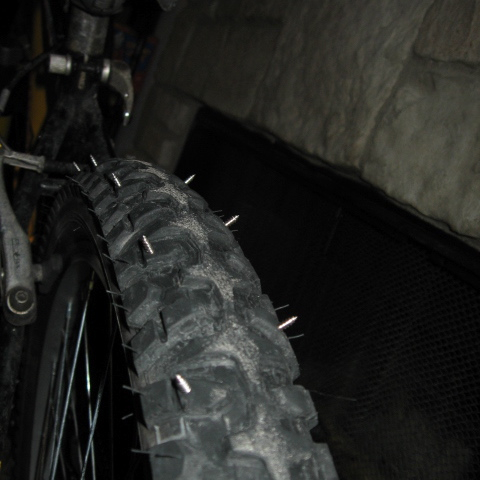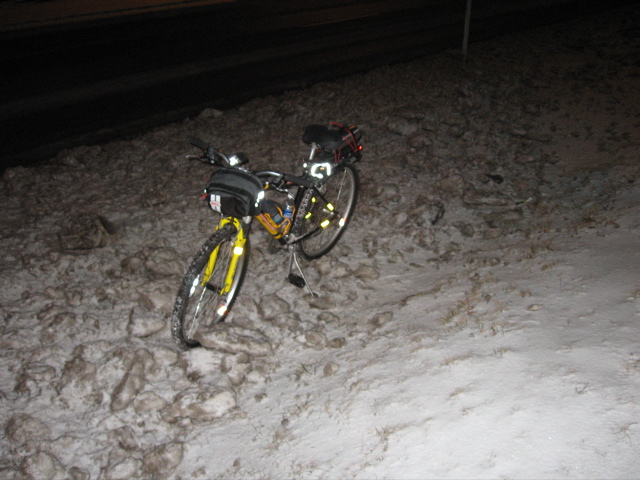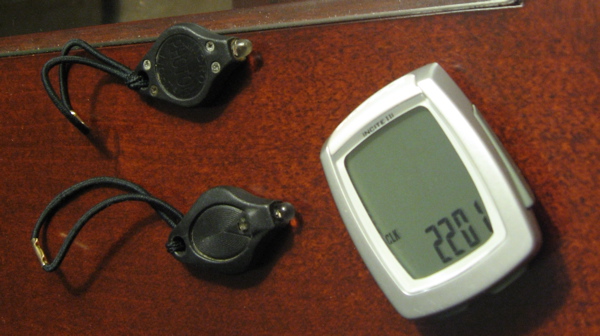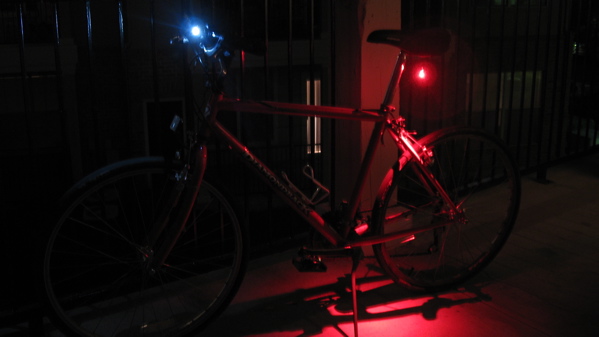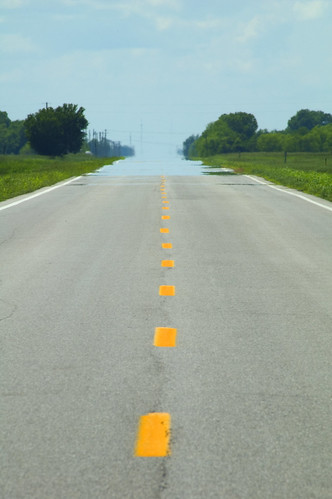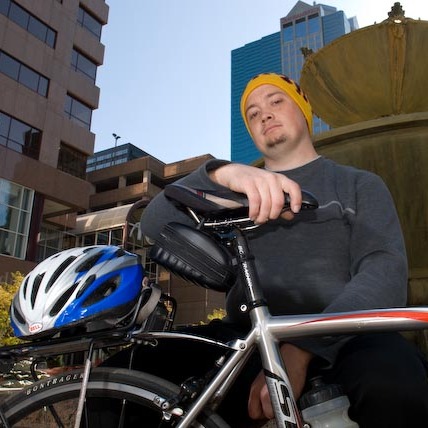Although it was near freezing this morning when I left, it was also the first time in months that I've seen a sliver of the sun above the horizon as I left home. That means that "bicycle season" is upon us, and I won't seem so crazy anymore.
With the looming economic woes, many folks are looking at ways to cut back the budget, either to make ends meet or to increase the size of their nest-egg. Now is a great time to break out that bike and take it for a spin to work. It's the fun, healthy, and cheap way to travel relatively short distances!
The Facts
- The average person will be about 4 times faster on a bicycle than they would be on foot for a given amount of effort. People who walk at 2-3 MPH can comfortably cruise along at about 10 MPH.
- Almost anyone can ride a mile or two on a bicycle. It just takes some getting used to.
- About 40% of urban travel in the US is within 2 miles. Again, most people can ride that far.
- There are many proven benefits to getting 30 minutes of cardio workout per day.
- You can get 30 minutes of cardio out of 4-6 miles of bicycle riding.
- With a proper diet, you won't likely need to eat more food than usual for these distances.
BikesIt's all about comfort, but almost any bicycle will work fine for commuting a few miles each direction. Upright cruiser bicycles with fenders and chain guards are a popular choice for the urban bicycle commuter. Mountain bikes are cheap and plentiful, but don't do too well for longer distances. Road bikes, touring bikes and cyclocross bikes are popular for those who are used to weekend group rides, those who prefer a faster pace, or those who have longer commutes. A reputable bike shop should be able to help you decide on the right kind of bike.
If you've already got a bicycle that's gathering dust, why not have a bicycling friend or a bike shop look at it? If you're in the Kansas City area, I'd be happy to tune your bike up for you, and show you how to do routine maintenance checks. Just send me an email via the form on the right side of my website.
Accessories
Accessories are a personal preference thing. Feel free to eschew any of these if you don't think they're for you. Take helmets for example. After crashing WITH a helmet (and imagining how bad it could be without one), I usually opt to wear mine. Then again, I ride daily, sometimes as much as 29 miles round trip. I usually don't wear one when I ride to get groceries. That's a 2.5 mile round trip ridden mostly through parking lots and residential roads. The decisions are yours.
LightingIn general, you will want some kind of lighting on your commuter bike. This will help grab the attention of the motorists, both oncoming and overtaking. The
Planet Bike Superflash is a relatively inexpensive (and very bright) option for a tail light. It's what I use daily.
Headlights are a different thing entirely. They can basically be divided into two groups: "to see with" and "to be seen". The former group of lights are typically
more expensive (
yikes!) You really only need "to see with" lights if you intentionally ride in the early morning or late evening when ambient and/or overhead street lighting isn't enough to safely ride by. You can still find some relatively inexpensive lights to fit the bill here. Look for LED lights offering more than 140 Lumens (200+ is better) or Halogens offering more than 10 Watts (15 and up is better).
"To be seen" lights are usually flashing LED headlights. Many can be purchased for $25-$30. They are good to use in fog, rain, or toward sunrise and sunset. For this, I use an older 2.4 Watt halogen predecessor to the
CatEye EL220.
If I'm recommending things to people who are just getting started, I recommend a "to be seen"
headlight and tail light set. I wouldn't commute without them. Best of all, these less expensive lights are easy to find at almost any sporting goods store, or even the "bicycle shaped toy" aisle at big retail shops.
ReflectivityBeing seen, if you can't tell, is a bonus.
Reflective vests, proper reflectors on your bicycle (front, rear, pedal reflectors and spoke reflectors) and other reflective items (Shoes with reflective material, reflective tape on your bicycle, etc) help you to be seen. Bicycling isn't about looking cool, so don't pretend. Be seen. This is more important for those who commute near dusk and dawn.
CargoThis ties in with the next section, Logistics. Most commuters will have to carry stuff to and from work. Backpacks,
panniers,
cargo racks, trunk bags, messenger bags and handlebar bags are all viable solutions. You will have to choose what fits your needs and wants. It helps if your bicycle is compatible with the method you choose. Not all bikes are designed for cargo racks, for example; and wearing a backpack can be tricky whilst riding a recumbent.
Creature ComfortsFenders can keep puddles from ruining your day and when it's raining lightly, they keep road grime from giving you the Butt Stripe Of Doom. Water bottles or hydration backpacks help on longer commutes or in hot climates. A seat wedge with flat-tire repair stuff is nice to have, but only if you're comfortable fixing your flat tires. Sometimes, it's just easier to carry a mobile phone so you can have a friend rescue you from those situations.
LogisticsAt work, you may need specialized clothing that may or may not be conducive to cycling. You may also need to take lunch, a briefcase, or other bulky items along. Take these into account when figuring out how you are going to make sure you get to work with everything you need intact.
ClothesWhen the weather is nice, you can get away with riding a bicycle in business casual or even more formal clothes, if you only have a mile or two worth of riding. Use an ankle strap or roll the pant leg up to keep it from getting stained or caught by the chain. Alternatively, use a bicycle with a chain guard. A T-shirt beneath the work clothes you'd normally wear will keep you from pitting-out that office shirt so easily.
If you've got a little further to ride, you might encounter puddles or rain, or you'd just rather not risk putting wear and tear on your work clothes, you can opt to do a number of things:
- Keep work clothes and shoes in your office
- Carry some of all of your work clothes with you on the bike every day
- Occasionally haul a few days of clean clothes to the office (by bike or by car)
Those are just a few examples. Depending on what else you need to carry with you, you can determine the appropriate cargo solution as mentioned above.
Multi-Mode
When the weather isn't too great or I don't feel too well, I ride my bike to the bus stop. Many metropolitan areas facilitate bicycles on their trains and buses. The full 29-mile round trip is definitelty longer than most people would consider a reasonable bike ride. When I include the bus, I ride about 5-6 miles per day. This combination of bicycling with transit provides a great deal of flexibility. I no longer need to worry about taking the bus to the same place my car is parked. I have a bicycle with me downtown to get around with, and parking is free wherever I go.
More questions?Feel free to ask in the comments!

